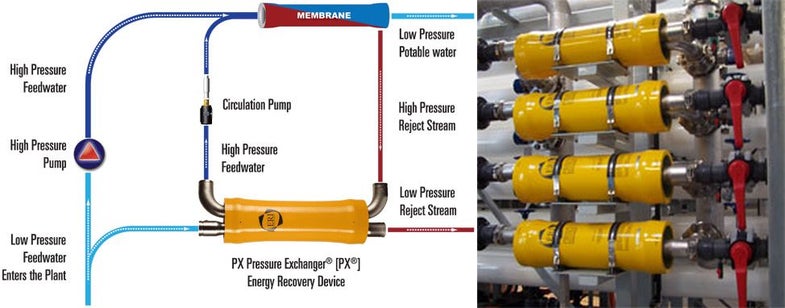California’s First Full-Scale Desalination Plant Lets Residents Drink the Pacific Ocean
The plant could produce more than 98 million gallons of drinking water per year

Thirsty Californians living in Sand City began satiating their thirst with Pacific Ocean water starting this week, following the official launch of the state’s first full-scale seawater desalination plant. The city hopes to ensure that people won’t notice any difference in quality or taste compared from the reservoir water that usually comes out of their taps, according to Scientific American.
The brackish water treatment plant is expected to provide up to 98 million gallons (370 million liters) of drinking water per year, and cut down on that amount of water drawn from the Carmel River and Seaside Aquifer reservoirs.
Desalination works in this case by forcing seawater through a semipermeable membrane to separate out the salt. The $11.9 million plant operated on a test basis for more than a year, but only recently received permission from the California Department of Public Health to connect directly to the water grid serving the Monterey Peninsula.
Sand City has the good fortune to sit near a brackish coastal area where water is less salty than typical seawater — and that means less energy and costs to desalinate. The city plant also uses reverse osmosis as its method of choice, rather than more expensive distillation which involves evaporating the water to separate it out from the salt.
The plant takes two additional steps to reduce its impact on marine life and to boost energy efficiency. First, it adds a special solution to the leftover salty brine that matches the salinity of Monterey Bay. And second, it uses special rotors to recover 98 percent of energy from the flow of salty concentrate, and puts that energy toward pumping seawater through the reverse osmosis membrane.
Desalination has become more and more attractive as a thirsty world looks for new freshwater sources. There’s even a mini-sized desalination chip designed by MIT researchers that could provide drinking water for remote villages in the wake of disasters.
IBM researchers and scientists at Saudi Arabia’s national research organization have also been working on water filtering technology that could create a breakthrough in solar-powered seawater desalination. Considering that an estimated 1.2 billion people still lack access to safe drinking water, we’ll take what we can get.
[via Scientific American]